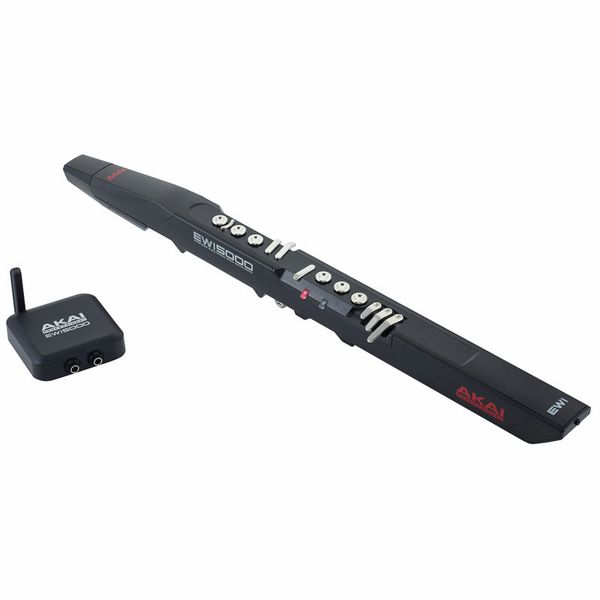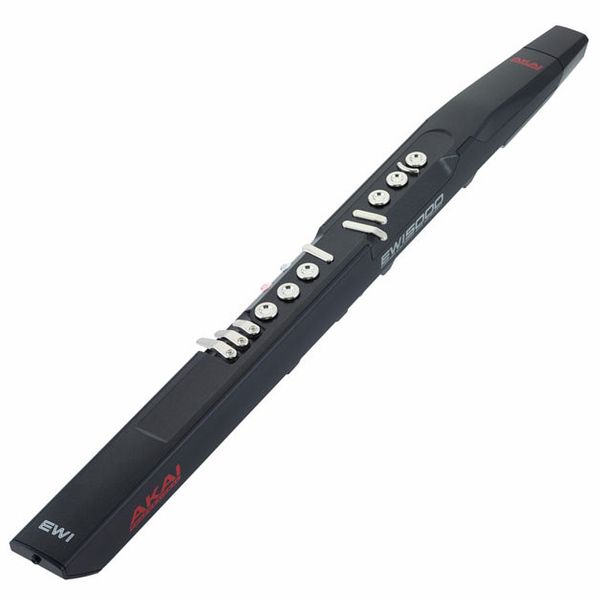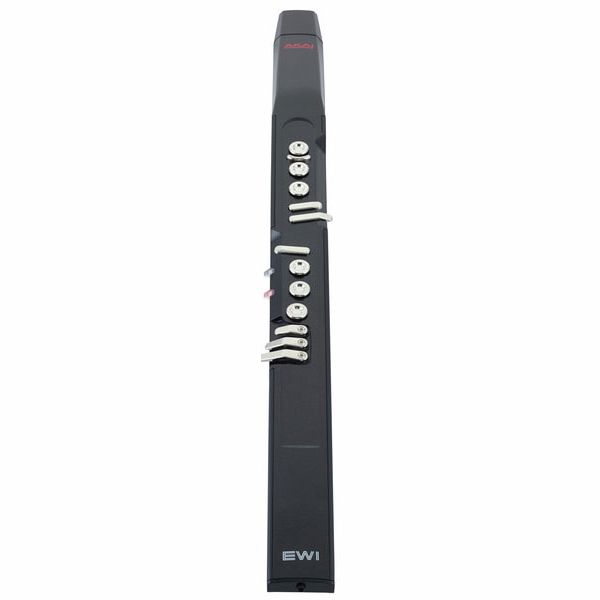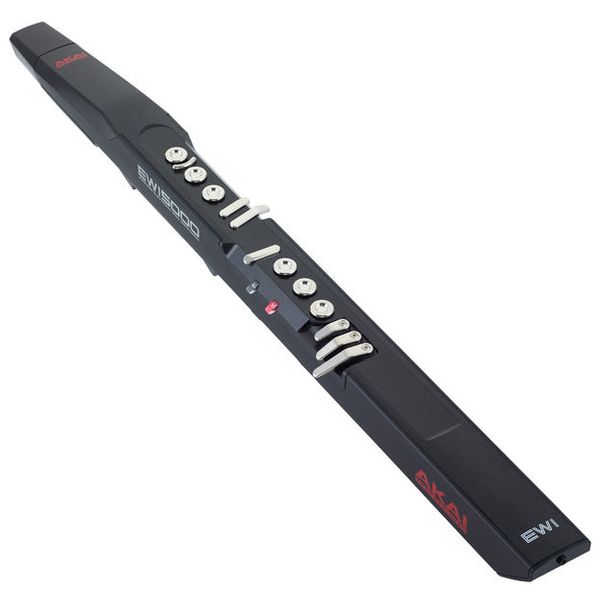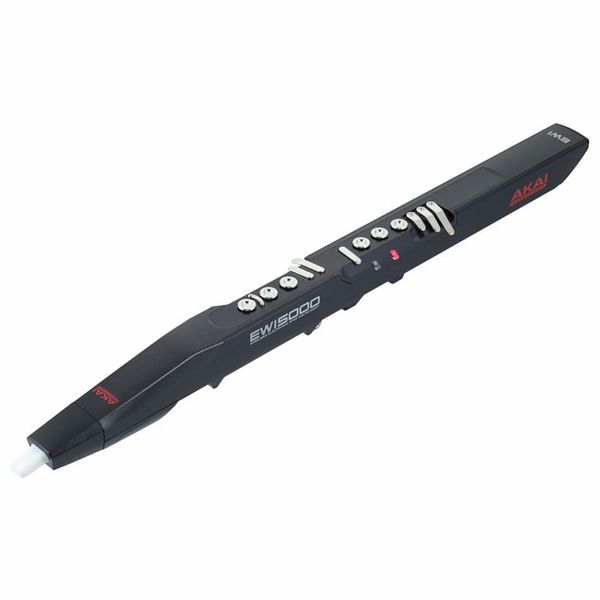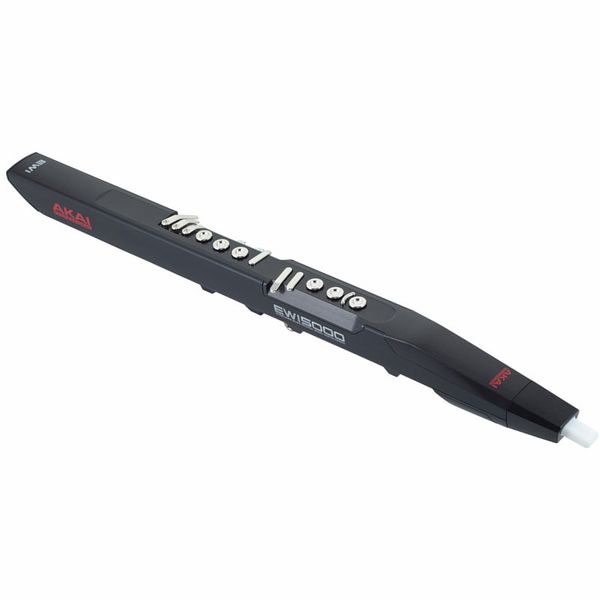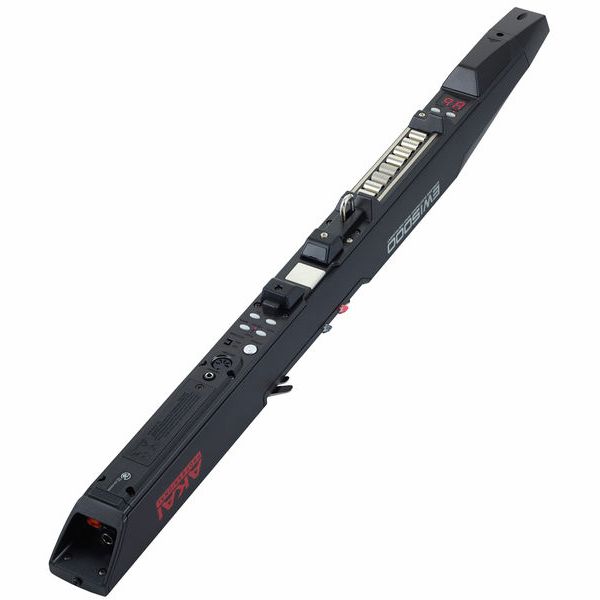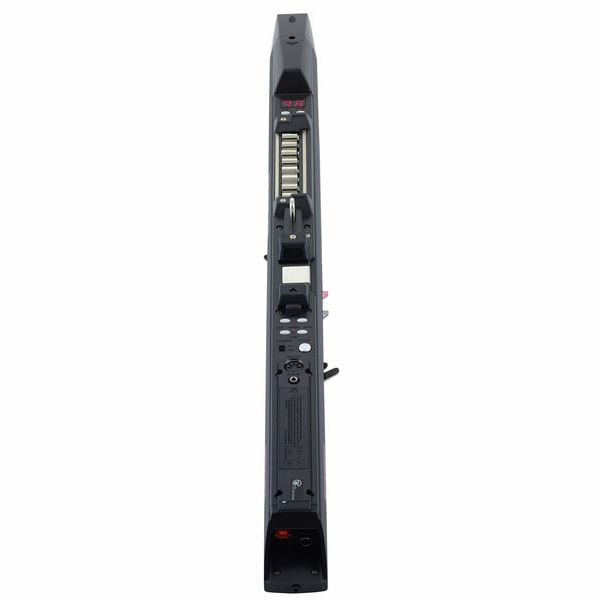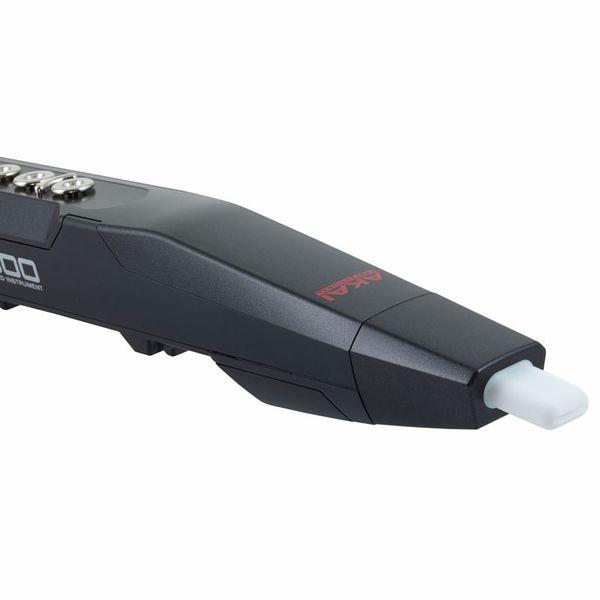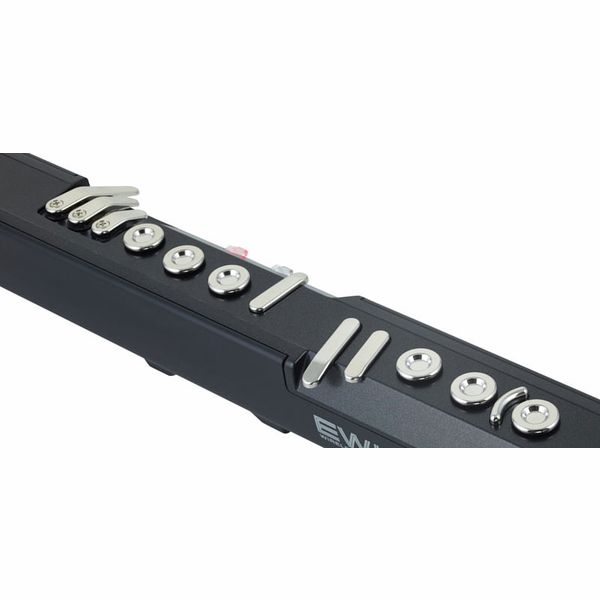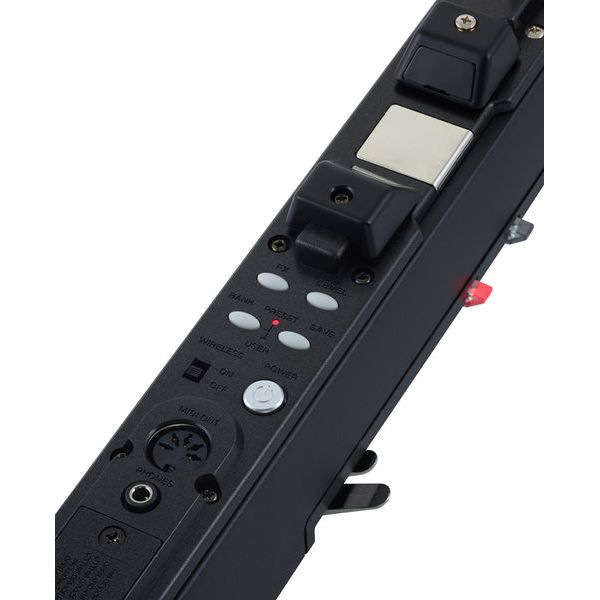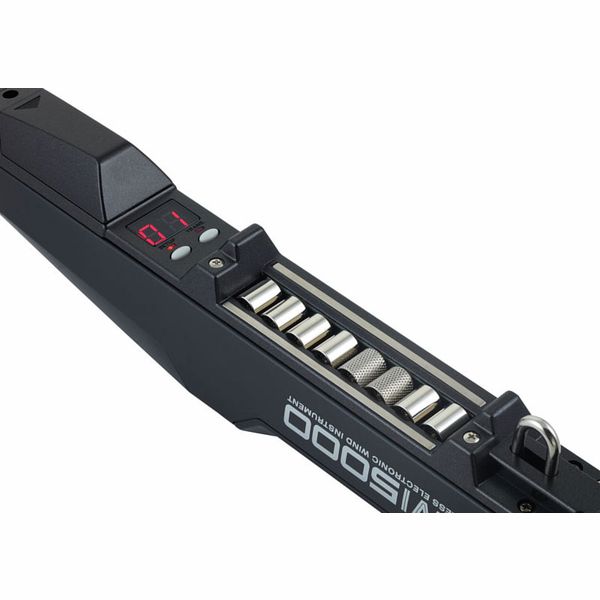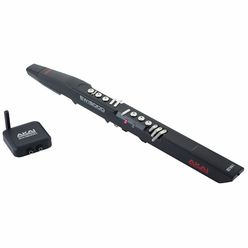Wireless Electronic Blow Converter
- With internal sound generation
- Mouthpiece with air pressure and bite sensor
- 13 Touch sensors
- 8 Octave rollers - 6 moving rollers and 2 fixed touch sensors
- 8 Instrument and effect controller reeds
- 2 Pitch bend plates
- Stereo wireless audio 2.4 GHz
- 1 Line output: 6.3 mm jack
- 1 Headphone output: 3.5 mm mini jack
- USB midi
- MIDI out
- Power supply: Lithium-ion battery (rechargeable via USB)
- 3 GB onboard sound library
- Dimensions: approx. 676 x 61 x 43 mm
- Weight: approx. 900 g
- Colour: Black
Electronic instrument with unparalleled expression
The latest EWI 5000 electronic wind instrument from Akai Professional is a wireless model that comes complete with an internal sound library by SONiVOX and features a mouthpiece complete with air and lip sensors, which enable extensive sound changes while the instrument is being played. Control over parameters that enable further modifications to the sound of the instrument is provided courtesy of 13 touch sensors, which can also be used to set effects that give the sound more punch. This extensive range of features makes the Akai Professional EWI 5000 a standalone instrument that delivers outstanding creative expression to artists everywhere.

:format(jpeg))
Unique playing experience
The manner in which the notes are played on the Akai Professional EWI 5000 is reminiscent of that of a clarinet or saxophone. The chrome-plated keys on the front of the instrument can be played with every finger, minus the thumb, while the octave rollers at the rear are operated with the thumb of the left hand and control the octave position via a grounding plate. The glide plate opposite is used to activate and deactivate the portamento function. Instead of forming the so-called thumb hook, as used on saxophones to stabilise the instrument, the thumb of the right hand operates two plates, which are used to bend the pitch. The breath entering the white silicone mouthpiece comes into contact with a membrane, which in turn controls the note generation parameter, while the lip pressure controls the vibrato effect. The software included with the instrument can be used to preload six different fingering presets and also provides beginners with configurations that are easy to play.
:format(jpeg))
Wireless instrument for free performance
The EWI was first introduced as a standalone instrument by Nyle Steiner in the 1970s. Since the 1980s, development work on this instrument, which has been used by Jazz musicians such as Michael Brecker, Candy Dulfer, and Bob Mintzer, has been undertaken by Akai Professional. The EWI is most comparable to a synthesiser and is not a digital variant of an acoustic instrument. Every performance is an optical showstopper courtesy of the exceptional sounds and access to numerous parameters, all wrapped up in an innovative design. The scope of delivery also includes a receiver for wireless operation with a transmission frequency of 2.4GHz, and the wireless instrument is powered by a rechargeable lithium-ion battery.
:format(jpeg))
About Akai Professional
Akai Professional has its origins in the long-established Japanese company Akai, founded in 1929, which initially manufactured electric motors, soon to be followed by high-quality tape recorders and hi-fi products. Since 1988, Akai has also become a household name like no other on the Hip-Hop scene. With the development of its first MIDI Production Centre (MPC for short), created in collaboration with Roger Linn, Akai wrote history by decisively influencing the sound of hip-hop and electronic music, which it continues to do to this very day. Famous exponents of the MPC series include DJ Shadow, Eminem, and Kanye West. Today, Akai is also well known for its robust and versatile USB MIDI controllers, not least of which is the bulletproof APC range of Ableton controllers.
Sample-based sound generation with 100 presets
The EWI 5000 produces sample-based sounds, to which end it comes loaded with a whopping 3GB comprising 100 built-in stereo sounds that can be selected via the display on the back of the instrument. Around half of these are samples from a variety of wind instruments, with the remainder comprising synthetic basses, leads, and spherical sounds. Some of these parameters, such as cut-off frequency or LFO, can be controlled on the instrument itself, while the EWI 5000 sound and software editor for Mac and PC can be used to configure the sounds in more detail. A low-pass filter, two optionally switchable envelopes, and a sine-wave LFO complete with delay parameters for transient vibratos are already integrated into the instrument. Communication takes place via the MIDI data protocol. The rear of the instrument is fitted with a MIDI output for controlling external instruments such as synthesizers, and a number of buttons, which can be used to retrieve and save presets and activate effects. A USB connection and stereo jack output can also be found at the bottom end of the EWI 5000.
:format(jpeg))
-
AKAI Professional Electronic Wind Instruments at a glance
-
Display Electronic Wind Instruments from $ 500 - $ 1000
-
Go to product group Synthesizer Peripherals
-
Go to product group Electronic Wind Instruments
-
Go to product group Wind Instruments
-
Show manufacturer details for AKAI Professional
-
AKAI Professional Wind Instruments at a glance





